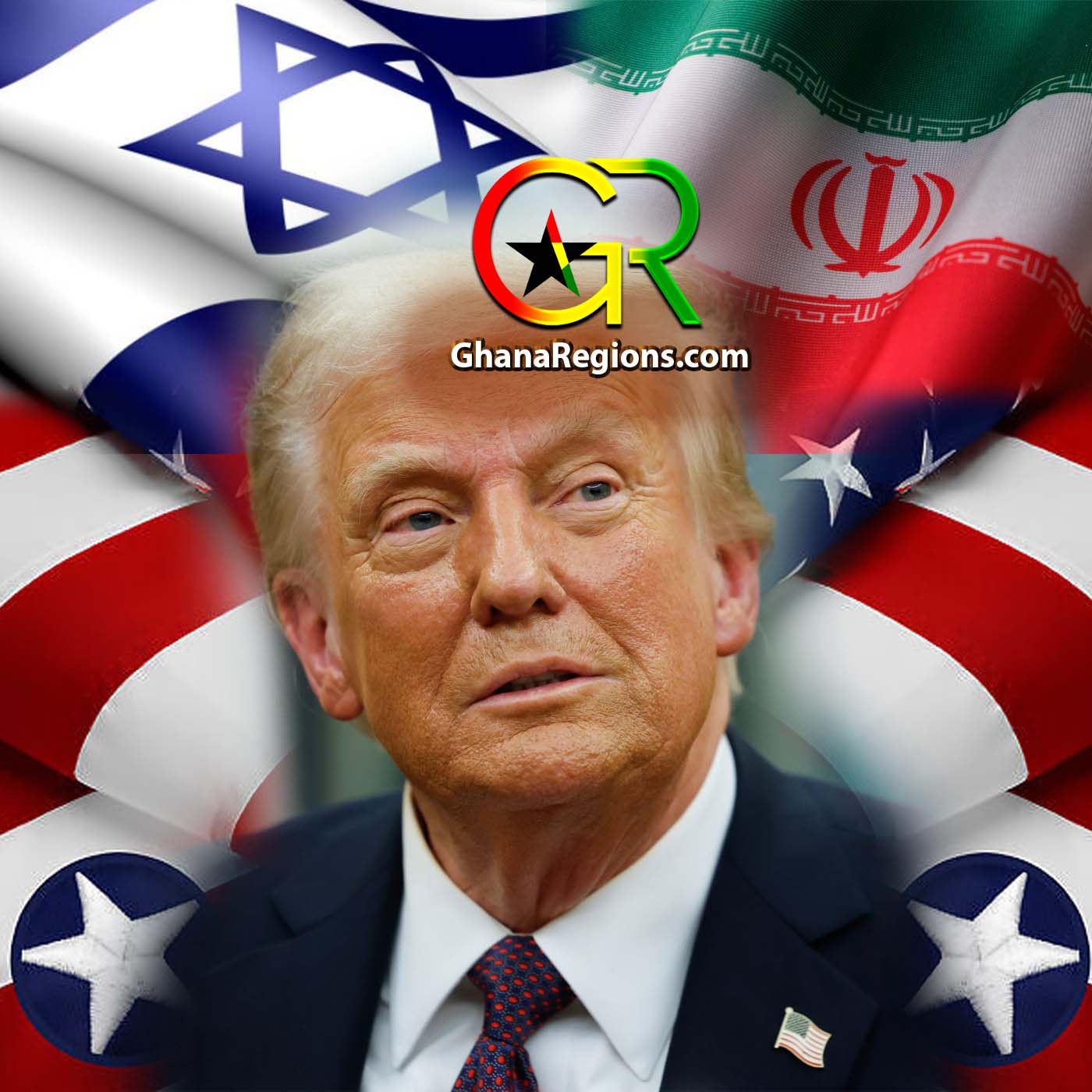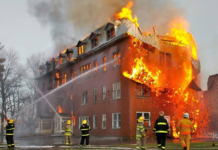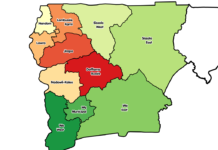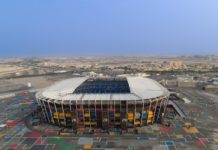
News reaching GhanaRegions.com indicates that, in a dramatic escalation of Middle East tensions, the United States has directly intervened in the ongoing war between Israel and Iran, launching coordinated airstrikes on three Iranian nuclear facilities.
This marks the first confirmed U.S. military action targeting Iranian nuclear infrastructure and significantly raises the risk of a broader regional conflict.
Background: Israel-Iran Conflict Intensifies
According to GhanaRegions.com analyst, the roots of the conflict trace back decades, with Israel and Iran maintaining hostile relations since the 1979 Iranian Revolution. Over the years, Israel has accused Iran of developing nuclear weapons under the guise of a civilian program, a claim Tehran vehemently denies. Despite numerous covert operations, cyberattacks, and targeted assassinations — many attributed to Israel — open warfare was largely avoided until early 2025, when a missile exchange triggered by border clashes with Hezbollah spiraled into a full-scale confrontation.
Israel launched a series of preemptive strikes deep into Iranian territory in March 2025, targeting Revolutionary Guard bases and suspected nuclear facilities. Iran responded with ballistic missile attacks on Israeli military and civilian targets, drawing condemnation and concern from around the world.
The U.S. Enters the Conflict
In the early hours of June 21, 2025, American B-2 Spirit stealth bombers and F-35 strike aircraft, reportedly operating from bases in the Gulf and Diego Garcia, carried out precision strikes on three key Iranian nuclear sites: the Natanz enrichment complex, the Fordow underground facility, and a suspected centrifuge assembly plant near Isfahan.
Pentagon officials confirmed the operation, citing intelligence that Iran was accelerating efforts to weaponize enriched uranium amid the chaos of war. A senior U.S. defense official stated:
“We acted to eliminate an imminent threat. Iran was moving beyond red lines, and inaction would have allowed irreversible nuclear escalation.”
The Biden administration (which has faced domestic and international pressure over its handling of the Iran-Israel conflict) argued the intervention was both defensive and preemptive. In a televised address, President Joe Biden emphasized that the United States does not seek war with Iran but will not allow nuclear weapons to proliferate in the region.
Details of the Strikes
According to satellite imagery and Iranian state media, the strikes caused significant damage:
Natanz – Iran’s primary uranium enrichment facility, was hit with deep-penetrating munitions. Iranian sources claim several centrifuge halls were destroyed, though the full extent is still being assessed.
Fordow – A heavily fortified underground site built into a mountain, was targeted with specialized bunker-buster bombs. Preliminary reports suggest the facility may have been disabled.
Isfahan Centrifuge Plant – Believed to be a key node in Iran’s enrichment infrastructure, was engulfed in flames, with secondary explosions suggesting a hit on stored nuclear components or fuel.
Iran has yet to release full casualty numbers, but early estimates suggest dozens of personnel may have been killed or injured.
Iran’s Response and Global Fallout
GhanaRegions.com can confirm that, Iran’s Supreme Leader Ayatollah Ali Khamenei issued a fiery response, vowing “severe and comprehensive retaliation.” The Islamic Revolutionary Guard Corps (IRGC) announced it had placed all forces on high alert and threatened to target U.S. assets in Iraq, the Gulf, and the eastern Mediterranean.
Iranian state TV declared the U.S. “an active combatant in a war against the Islamic Republic,” warning regional allies of America — including Saudi Arabia and the UAE — that they would also be considered hostile parties if they provide bases for further U.S. operations.
Global reactions have been swift and divided:
Russia and China condemned the U.S. strikes, calling them a violation of international law and sovereignty.
The EU urged all parties to de-escalate and called for an emergency UN Security Council meeting.
Gulf States issued guarded statements, calling for calm but privately bracing for regional retaliation.
Israel welcomed the strikes, with Prime Minister Benny Gantz thanking the U.S. for its “principled and necessary action.”
Implications and Risks Ahead
This U.S. intervention marks a turning point. What began as a bilateral war between Israel and Iran is now evolving into a multi-nation conflict with unpredictable consequences. Key risks include:
Direct Iran-U.S. Confrontation: Iranian retaliation against American forces in Iraq, Syria, or the Gulf could trigger a full-blown war.
Regional Destabilization: Hezbollah and Shiite militias may open new fronts in Lebanon, Iraq, or Yemen, dragging in Israel and the U.S. further.
Nuclear Proliferation Crisis: If Iran’s nuclear capabilities are indeed crippled, it may abandon any remaining NPT obligations, prompting other regional powers to reconsider their own nuclear policies.
Diplomatic channels are being urgently reactivated. Reports suggest that Swiss and Qatari intermediaries are attempting to broker a ceasefire or at least a cooling-off period. However, with tensions running high and trust at a historic low, the road to de-escalation appears steep.
The United States’ decision to strike Iranian nuclear sites represents one of the most consequential foreign policy moves in decades. While Washington argues it was necessary to prevent a nuclear-armed Iran, critics warn it may have triggered a chain reaction that could engulf the entire Middle East in war. As the world watches anxiously, the coming days will reveal whether this bold move was a calculated deterrent or a dangerous misstep into a wider regional inferno.
















































![Morocco knock out Spain on 3-0 penalties to reach FIFA World Cup 2022 quarter-final, Morocco vs Spain (0-0) (3-0) [Video]. Morocco knock out Spain on 3-0 penalties](https://ghanaregions.com/wp-content/uploads/2022/12/Watch-Morocco-vs-Spain-0-0-and-3-0-penalties-218x150.jpg)




































